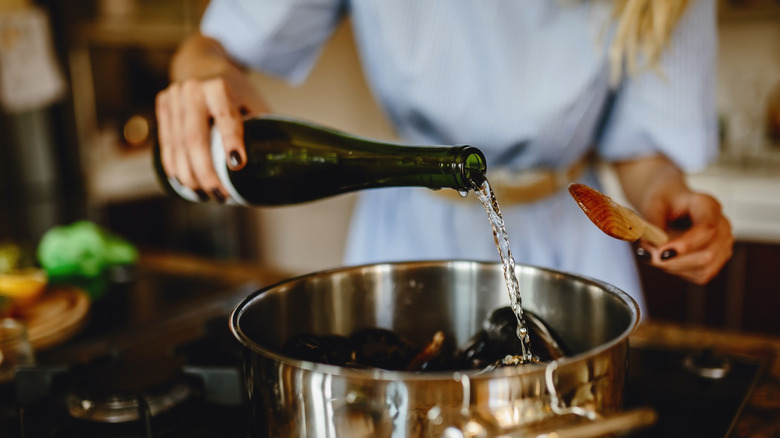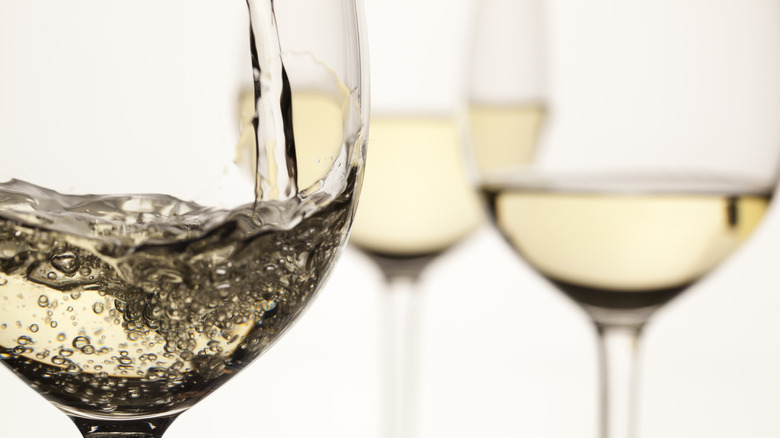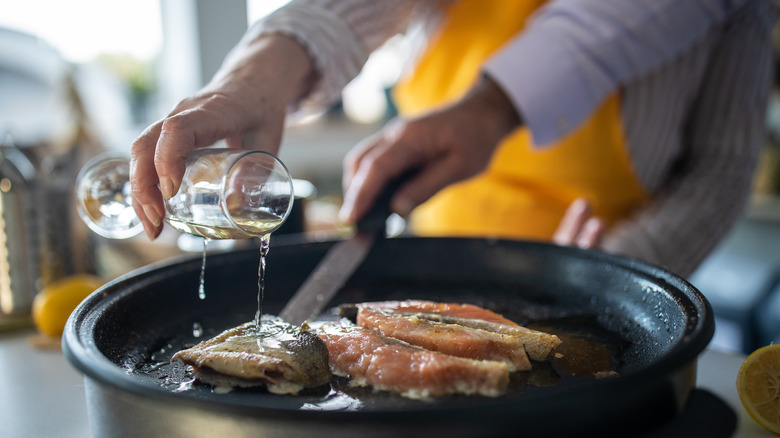If You Don't Have White Wine For A Recipe, You Don't Always Need A Substitute
Cooking with white wine is a common occurrence, as the ingredient is often found in a number of recipes. But, if you forgot to pick up a bottle or are expecting a dinner guest that abstains from alcohol, there are occasions where you might have to go without the splash of wine. Before considering if you should prepare a different dish, it should be noted that, while white wine can be a vital component, it isn't always required for a recipe in many cases. Sometimes, using a substitute is okay, but even then, it may not be necessary.
When determining whether or not to skip the inclusion of white wine and substitutes, consider why it was added to the cooking process for your dish. For instance, a recipe like white wine clam sauce over linguine only calls for ¼-cup of wine, which is not much when you compare it to the 13 ounces of clams in juice (which will be more prominently featured than the other ingredients). In this example, you could conclude that white wine doesn't play as big of a role. Nevertheless, it still serves a function and is even in the name of the dish. Depending on how much wine is needed, that purpose can vary and it's not always required to include it.
White wine's role in cooking
Although you can certainly bypass white wine in many dishes, it still has a particular job in the cooking process as an added flavoring. After all, every ingredient in a recipe performs a part when creating complex flavors. White wine is often used for its acidic qualities — acid can cut through bitter compounds and, in so doing, brightens the meal. As a result, when you don't have white wine or want to be considerate of guests that don't drink alcohol, it can easily be substituted for things like vinegar, lemon juice, tomatoes, honey, and even yogurt, which are all comparable in acidity. Wine typically hits between a 3 to 4 on a pH scale, while honey and tomatoes come in around 4, yogurt ranks at 4.4, and lemon and vinegar are the most acidic of the bunch at a level of 2.
It's important to keep in mind that the two primary acids found in grapes used for wine are tartaric and malic, which comprise titratable acidity and will also affect the taste. Titratable acidity refers to the quantity of acid, while pH discloses its strength, so the two are equally significant.
Alison Thomson, owner and winemaker of California-based Lepiane Wines, believes that titratable acidity "...is more about the flavor profile of those acids," whereas pH is about the chemical nature, as she told Wine Enthusiast. Thus, you'll want to stick with similar flavors and specific amounts of the ingredient when replacing white wine, especially if the substitution is sweeter. Nevertheless, white wine can still be excluded in most cases rather than finding a comparable swap.
When to skip white wine in a recipe
With all of this in mind, it's safe to say that, if the meal only requires a splash of white wine, you can probably continue the cooking process without it — especially if the recipe already requires other acidic ingredients (in this case, remember to tweak the ratios and be mindful of what's going in the dish so it still tastes relatively the same). However, if a recipe calls for more than ¼-cup of white wine, you'll likely have to replace the liquid to keep the integrity and texture of the dish.
In a situation where you have other acids in a dish (like lemon and tomato), and want to skip the white wine altogether, the best practice to keep the dish relatively the same is to add water or, preferably, stock to make up the liquid quantity. (If other acids are working in the process, then there's no reason to include another.)
So, the next time you're out of wine, don't stop yourself from making the entrée you want; give it a little thought and maybe a quick internet search to see what others have done. You may even devise a new way of preparing a beloved dish — after all, creativity is the mother of invention.


